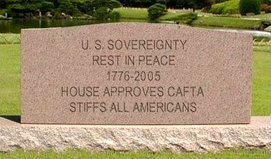Casinos in Florida
An analysis of the Economic and Social Impacts
Prepared by:The Executive Office of the GovernorOffice of Planning and Budgeting
The CapitolTallahassee, FL 32399-0001
EXECUTIVE SUMMARY
3. Recurring sales tax revenues would experience a net decrease of at least $84.7 million as Floridians diverted some of their existing taxable spending to casinos.
4. Crime and social costs attributable to casinos would total at least $2.16 billion annually.
PROBLEM GAMBLING AND RELATED CRIMES
According to psychiatrist Richard J. Rosenthal, most gambling addicts "are seeking 'action', an aroused, euphoric state comparable to a 'high' derived from cocaine and other drugs" (Worsnop, page 250).
Counselors Arnie and Sheila Wexler of New Jersey state "most dual-addicted cocaine addict/compulsive gamblers will tell you gamblling gives them a bigger high. Some drug addicts, who are also gambling addicts, will sell their drugs for gambling money." (Worsnop, page 250).
Several studies have been conducted in an attempt to quantify the costs of problem gambling behaviors.
In 1994, Rachel Volberg reported that the average individual pathological gambler cost the public $13,600 each year (in 1981 dollars). This includes income that would have been earned for those who lost their jobs, costs of prosecuting and incarcerating individuals for crimes caused by their gamblilng behavior, and bailout costs, such as family gifts. Other problems include lost job productivity, impaired judgment at work, lost productivity of spouses, divorces, unemployment compensation, depression, physical illness related to stress, and suicide.A Marylalnd Department of Health and Mental Hygiene task force determined that its 52,000 adult gambling addicts cost citizens $1.5 billion in lost work productivity, monies stolen and embezzled, bad checks and unpaid taxes (Worsnop, 1990, page 644). The cost per individual compulsive gambler exceeds $28,846 and significantly increases when related costs for social services, health care, bankruptcies, legal and correctional fees are considered.The American Insurance Institute estimates that 40 percent of all white collar crime has its roots in both legal and illegal gambling. Problem gamblers are responsible for an estimated $1.3 billion worth of insurance-related fraud per year. Insurance companies paid fraud victims an average of $65,000 (Lesieur, page 45).
The mean gambling debt of people in compulsive gambling therapy ranged from $53,000 to $92,000, not including debts paid.As many as 10 to 17 people may be innocent victims of each compulsvie gambler (Lesieur, 1984), including spouses, children, parents, other relatives, employers, co-workers and friends. Two out of three compulsive gamblers will commit illegal activities in order to pay gambling related debts and to continue gambling.One out of every four problem gamblers have been involved in an auto accident during the worst of their gambling. Almost half of those surveyed were speeding on their way to gamble or on the drive back (Florida Council on Compulsive Gambling).New Jersey residents also report that 28 percent know of someone who gambles too much (Gallup, page 4).
Poor and working people spend a disproportionate share of their incomes on gambling (Goodman, page 8). As a result, state gambling revenues come disproportionately from lower income residents, causing a regressive form of taxation. Problem gambling behaviors are highest among the poor and minorities (Goodman, page 17).YOUTHA 1985 random sample of 332 students at an Atlantic City high school found that 64 percent of the students had gambled illegally at local casinos. Over 40 percent had gambled in casinos before the age of 14.COST OF PROBLEM GAMBLING BEHAVIORS IN FLORIDA
1. As noted by Lesieur, two out of three problem gamblers will commit a crime in order to support illegal gambling activities. This means that 266,667 individuals in Florida will commit crimes such as burglary, larceny, theft, forgery or fraud. While not all of the individuals will be convicted, they will likely continue to commit crimes. Some will be convicted more than once.
2. The average sentence length of a person convicted of burglary in Florida is 5.7 years; theft, forgery and fraud 4.2 years; and robbery 8.8 years. First time offenders and non-violent offenders will likely serve probation or community control rather than prison time.
3. Of these categories, 41.3% will likely be convicted of burglary; 36.8% for theft, forgery or fraud; and 21.9% for robbery based on current incarceration rates.
Not counting costs of prosecution, restitution or other related costs, incarceration and supervision costs alone for problem gambler criminal incidents could cost Florida residents $6.08 billion.Florida's problem gamblers related to casinos would require $1.66 billion in prison construction costs.Deducting these positive social effects from the estimated social costs results in a high, medium and low estimate of $3.25 billion, $2.65 billion, and $2.16 billion in net social costs, respectively.
OTHER CRIMEWhile many believe that legalizing gambling activities will decrease illegal gambling, an examination of dollars gambled does not support this belief. Dr. Vicki Abt, a sociologist at Pennsylvania State University, says legalization "has not decreased the dollar amount of illegal gambling; what is has done is decrease (illegal gambling) relative to legal gambling.
Whereas 75 percent or so was wagered illegally before the 1960s, now about 75 percent is wagered legally. But the total amount went up in the meantime." (Worsnop, page 643).
ATLANTIC CITY
In just three years following the opening of its first casino, Atlantic City went from 50th in the nation in per capita crime to first (Goodman, page 58). Crime spilled over into neighboring communities that received no measurable economic benefits from casinos. Atlantic City's crime rate rose 230 percent during the first three years of casino operations, over 25 times the growth rate of 9 percent for the rest of the state (FDLE, 1994, page 3). It should be noted that Atlantic City's population decreased by 20 percent during the same time period. Florida's crime rate rose by 30 percent during these same years.NEW ORLEANSNew Orleans estimates that crime-related costs will be just under $5 million for a single casino.
Widespread gambling could add an additional 10,000 new crimes at a cost to the city of an additional $14.1 million.
COLORADOCentral City, Colorado has increased its police force from two full-time and one part-time officer to 16 full-time officers in 1994 (Worsnop, page 256) to keep pace with its "skyrocketing incidents" of disorderly conduct, assaults and DUIs.CONCLUSION
Since state tax revenues (adjusted for pari-mutuel and Lottery revenue losses) are estimated to range between $155 million and $276 million while annual crime and social costs are estimated at a minimum of $2.16 million annually (and up to $3.8 billion), it appears that casino costs significantly outweigh the benefits of legalization.According to University of Nevada professor of Public Administration William Thompson, casinos generate significant new tax revenues "only if they can export their product. The local economy doesnÕt benefit if only local people are gambling."
Subscribe to:
Post Comments (Atom)









No comments:
Post a Comment